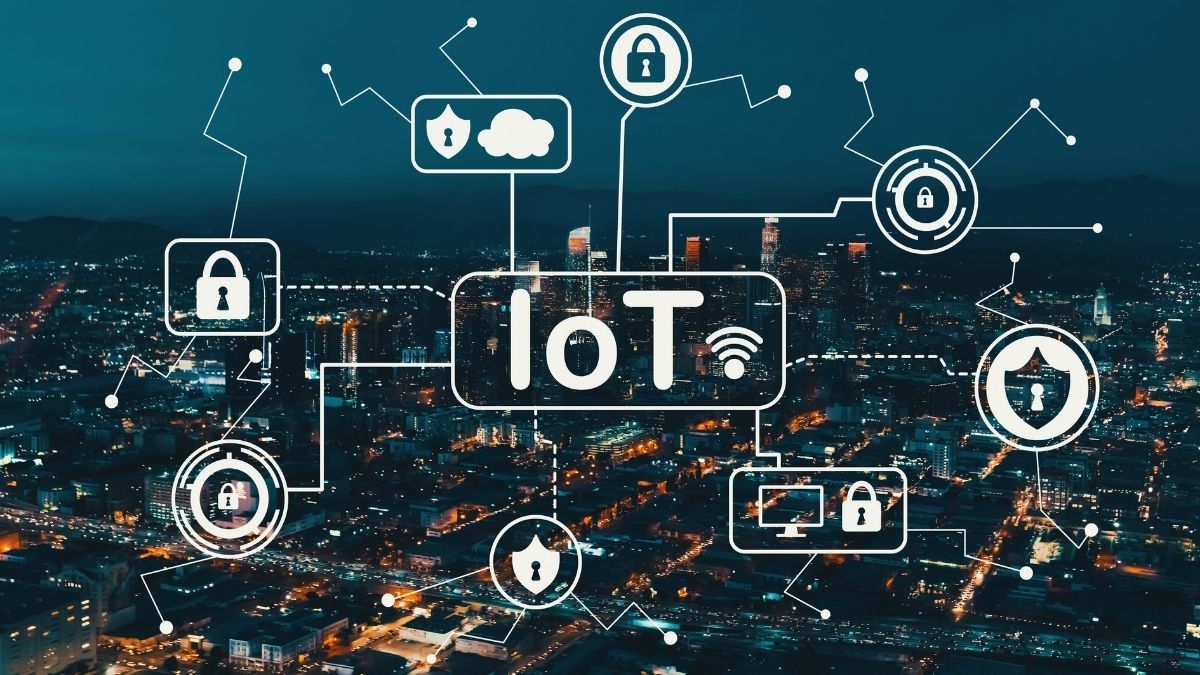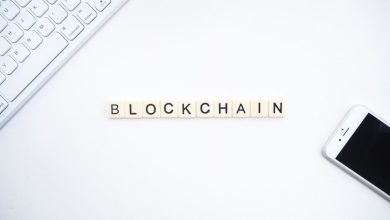
Technology is taking a sharper turn to change the world in unprecedented ways. As a result, the internet landscape is expanding as well. It is no longer restricted to smartphones, laptops, tablets, or computers. In today’s world, a plethora of devices is internet-connected, resulting in “smart” devices.
As you may be aware, IoT, or the Internet of Things, is an umbrella term for all internet-connected devices that we encounter in our daily lives.
Let’s start with the basics to understand how IoT can help us create a smart and connected world (not just devices).
What exactly is IoT?
IoT refers to physical objects/things that are globally connected to the internet for the purpose of gathering and sharing information. There is a vast array of existing and potential IoT devices. IoT networks provide an interconnected environment in which objects can have a digital presence and communicate with other objects and people.
The Internet of Things (IoT) is a revolutionary digital transformation that has the potential to touch everyone’s life. The effects of IoT can be seen everywhere. Smart cities, smart wearable devices, integrated supply chains, smart connected homes, parking sensors, and many other IoT devices are examples.
The Internet of Things (IoT) is rapidly expanding and being adopted. The current rate of IoT adoption is being driven by a number of other evolving technologies, including wireless protocols, large amounts of data, low-cost microprocessors, cloud-based web applications, and, most importantly, an increase in connected devices. From 2010 to 2025, you can compare the active connections of IoT and non-IoT devices.
IoT – Architecture Sensors, physical data, cloud services, communication layers, users, IoT protocols, business layers, developers, and actuators comprise IoT Architecture. And, due to the wide range of internet object domains, there is no universally followed standard defined architecture.
Various architectures were developed in response to the needs and demands of various industries. Nonetheless, there is a fundamental flow of processes upon which IoT is built. So, in this blog, we will go over the fundamental layers of IoT architecture (i.e., 5-stage IoT Architecture).
IoT – Architecture
The sensing layer’s functionality is the ability to detect changes in the physical condition of connected things in real-time. As a result, sensors are the primary components of this layer. Sensors can be used to measure the physical environment, collect data, identify and locate intelligent objects, and then send data to the cloud for analysis.
In the case of actuators, the process affects physical reality. They can, for example, change the room temperature or turn on/off the lights.
Layer of Communication
The communication layer is in charge of message routing between IoT devices, as well as connectivity and routing between the cloud and devices. Furthermore, data collected from sensors is sent directly to the cloud and application layer in the communication layer.
Protocols such as Message Queuing Telemetry Transportation (MQTT), Constrained Application Protocol (CoAP), and Lightweight Machine to Machine (LwM2M) make it possible to connect and send data between different devices.
The Cloud Layer
The Cloud Layer is where all of the data collected from sensors and devices is transferred. This layer’s functionality includes data storage, processing, and analysis. Furthermore, the cloud employs a data center as a central server to process data generated by edge devices.
Layer of Management
With the help of cloud management tools, the management layer can operate and monitor all of the other layers.
Layer of Application
Many services and applications are provided by the application layer, including data collection, analysis, visualization, and data security. As a result, it is highly dependent on the features required by the end-users.
IoT Protocols
IoT protocols are an important component of IoT technology. Devices will be rendered ineffective in the absence of protocols. Only IoT protocols allow IoT devices to communicate with one another by exchanging data in a meaningful and structured manner.
Data from a device or sensor is recognized by other gateways/devices/services thanks to IoT protocols. So, here is a list of IoT protocols that have been created for various applications.
Protocol for Restricted Application (CoAP)
A CoAP is an application layer protocol designed to meet the requirements of HTTP-based IoT systems. It enables devices with limited capabilities to communicate with one another via machine-to-machine communication.
Service for Data Distribution (DDS)
Data-Distribution Service (DDS) is a versatile peer-to-peer communication protocol. DDS allows you to run small devices to connect high-performance networks. It makes deployment easier, reduces complexity, and improves reliability.
Telemetry Transport Message Queuing (MQTT)
MQTT is a lightweight IoT data protocol. MQTT is used for low-bandwidth connections in remote locations. It employs a publisher-subscriber pattern and is ideal for small devices that require a powerful battery and bandwidth.
Protocol for Extensible Messaging and Presence (XMPP)
XMPP is a simple and open-source communication protocol. It is intended for near-real-time data exchange between various network entities.
Advanced Message Queuing Protocol (AMQP) (AMQP)
AMQP is a software layer that allows messaging middleware to communicate with one another. AMQP allows a diverse set of applications and systems to communicate with one another. It also generates standardized messaging on a large scale.
M2M that is lightweight (LwM2M)
LwM2M was created to manage and enable M2M (machine to machine) services remotely. This protocol specifies the communication protocol between an LwM2M server and a client located in an IoT device.
The Transmission Control Protocol (TCP) (TCP)
TCP is the dominant protocol for the vast majority of internet connectivity. TCP divides a large set of data into small individual packets and resends and reassembles packets as needed to provide host-to-host communication.
UDP stands for User Datagram Protocol (UDP)
UDP is a protocol that runs on top of IP and allows process-to-process communication. It also improves data transfer rates over TCP. UDP is ideal for applications that require lossless data transmission.
IP
Several IoT protocols use IPv4, but more recent implementations use IPv6. IP assists in the routing of traffic over the internet as well as the detection and location of network devices.
6LoWPAN
The network layer communication protocol is 6LoWPAN. It is most effective on devices with limited processing power.
Zigbee
Zigbee is a specification based on IEEE 802.15.4. It is intended for high-level communication protocols that are used to build personal area networks using low-power and small digital radios.
Providers of IoT Services
Now that we’ve covered the fundamentals of IoT, let’s take a closer look at the top IoT service providers on the market today.
Amazon Web Services IoT Core
AWS IoT Core enables secure bidirectional communication between internet-connected devices (sensors, embedded microcontrollers, actuators, or smart appliances) and AWS Cloud.
This enables you to collect, store, and interpret telemetry data from a variety of devices. You can also create apps that allow your users to control these devices from their tablets or smartphones.
Oracle Internet of Things Cloud
Oracle IoT Cloud is a managed PaaS cloud storage solution that assists in the development of critical business strategies and decisions by connecting IoT devices to the cloud and analyzing real-time data.
IoT on Microsoft Azure
Azure IoT is a collection of managed cloud services from Microsoft that monitor, connect, and manage billions of IoT devices. Azure enables you to build a wide range of IoT solutions to support your company’s digital transformation.
IoT by IBM Watson
IBM Watson IoT is a managed, cloud-hosted solution designed to make it simple to derive value from IoT devices. You can connect, capture, monitor, analyze, archive, manage, and monitor the usage of your IoT device using IBM Watson.
It provides a collection of IBM Cloud services as a single IBM-managed SaaS solution for collecting and analyzing data for IoT assets.
IoT SAP Leonardo
SAP Leonardo IoT combines innovation, technologies, and intelligent applications to help businesses leverage IoT and bring intelligence to their operations. It enables businesses to automate analytical processes and gain insights in order to improve business performance.
Mindsphere by Siemens
Siemens’ Mindsphere is a leading IoT as a Service solution. Mindsphere powers IoT solutions with data from connected devices by leveraging advanced analytics and Artificial Intelligence. To improve business models, develop high-quality products, and optimize all operations.
Internet of Things (IoT) connectivity
We already live in a hyper-connected world, where intangible things and people are linked by IoT. Furthermore, IoT includes intelligent networks that are systematically linked with services, things, and us – humans for distributed processing, networking, and sensing.
So, if you are a company looking to connect IoT with your products and services, hire developers with extensive knowledge in the field to help you with your tasks.
Learn more from technology and read How IoT is Changing Fraud Detection?




